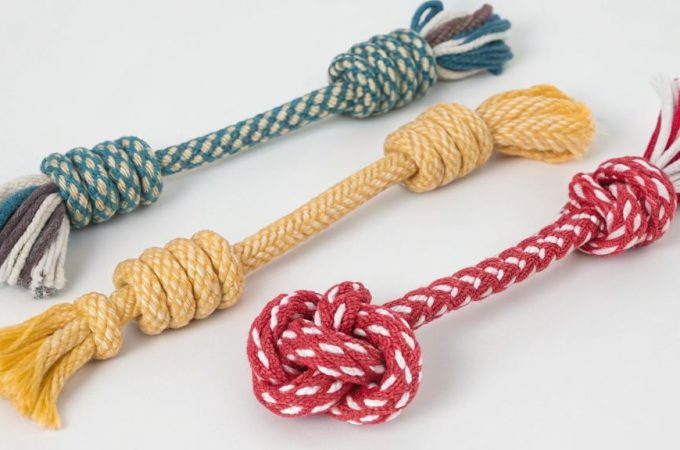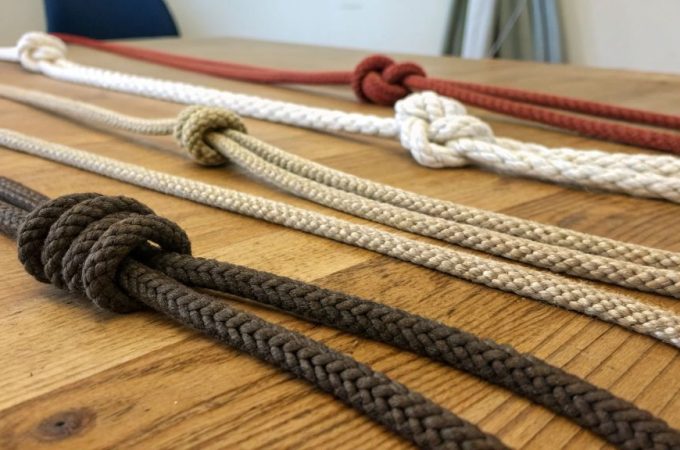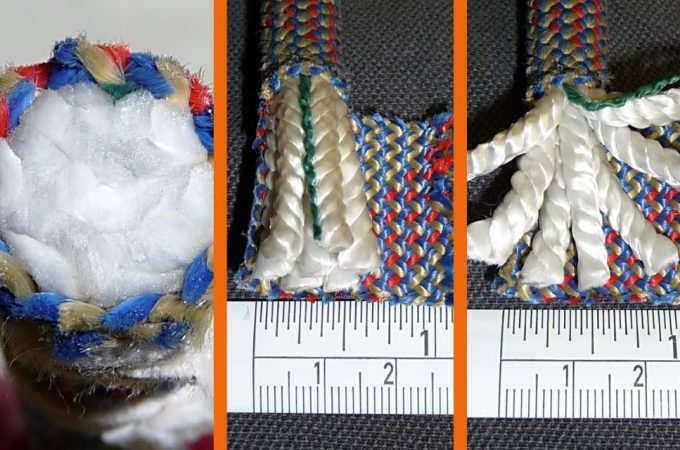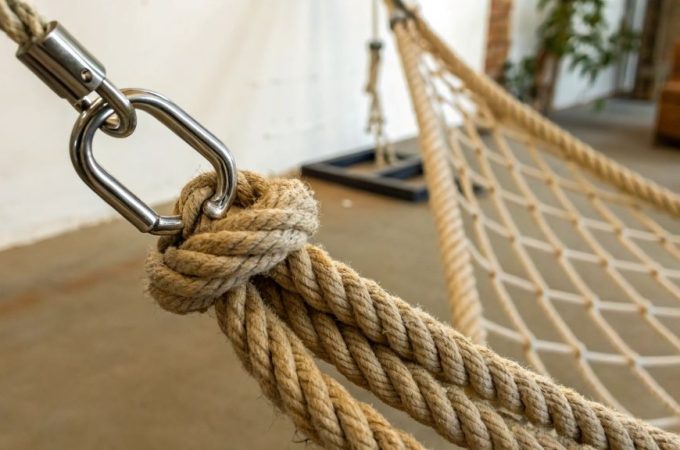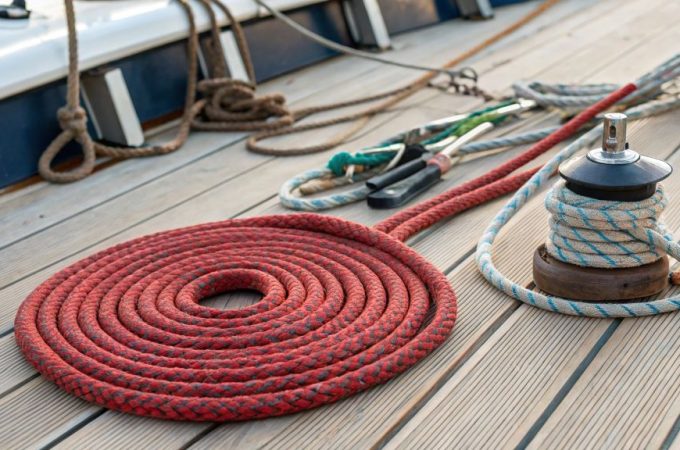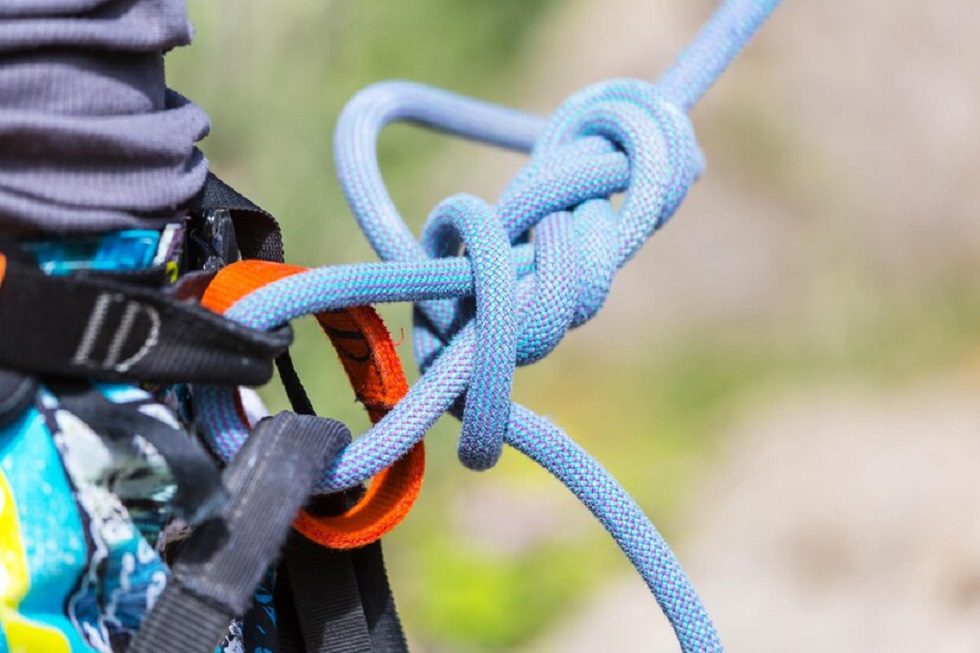
What is a Mountain Climbing Rope Called?
In the world of mountain exploration and adventure, there exists an unsung hero, an unyielding lifeline that connects climbers to the heights they seek. Mountain climbing rope, known by various names, plays a pivotal role in every ascent. So, what is a mountain climbing rope called? It’s not merely a mundane strand of fibers; it embodies safety, trust, and the spirit of conquest. Imagine standing at the base of a rugged peak, gazing upward with trepidation and excitement. Your heart races, your palms sweat – you’re about to embark on a journey where every step is a victory, and every inch conquered takes you closer to the sky.
Contents at a Glance
ToggleBut in this vertical realm, where solid ground gives way to sheer cliffs, where wind whistles through jagged rock formations, a single question resonates: How do mountain climbers use rope? It’s time to unravel the mystery, delve into the realm of mountain ropes, and discover the answer to the curious inquiry – what is a mountain climbing rope called?
What is a Mountain Climbing Rope Called?
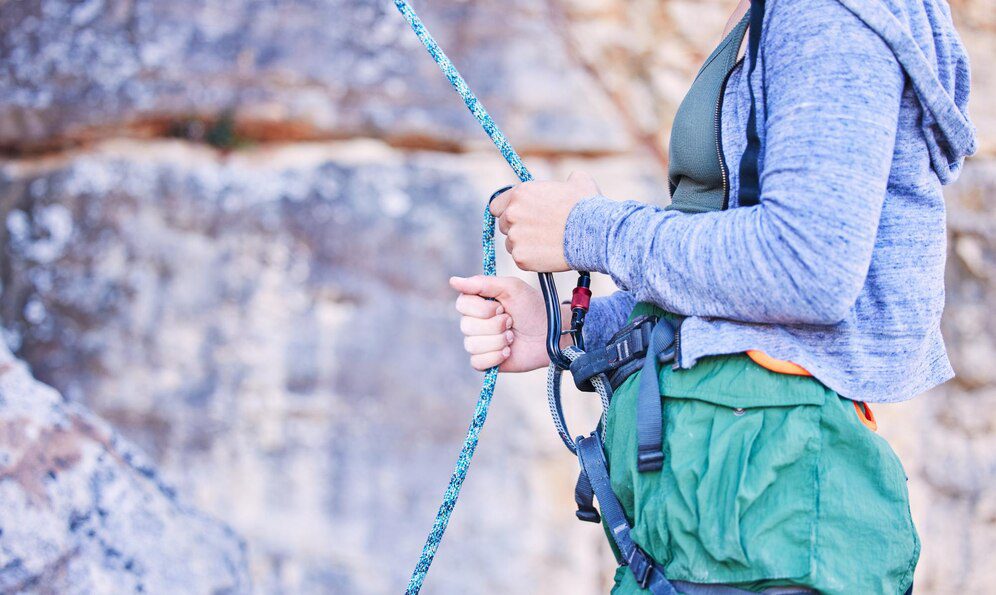
A mountain climbing rope, also known as a climbing rope, is a critical part of an extensive chain of protective equipment climbers use to help prevent potentially fatal fall-related accidents. In short, it’s the perfect answer to what is mountain rope? Climbing ropes are made of nylon or polyester and available in various lengths, diameters, and colors.
There are two main categories of climbing ropes: dynamic ropes and static ropes. Dynamic ropes are designed to stretch when a climber falls, which helps to absorb the force of the fall and prevent serious injury. Static ropes are not designed to stretch and are used for activities such as rappelling and hauling.
The most common type of climbing rope for mountain climbing is dynamic rope. The diameter of a dynamic rope ranges from 9.5 to 10.5mm. The length of the rope will depend on the type of climbing you will be doing. For most mountain climbing, a 60m rope is sufficient.
What is Dry Climbing Rope?
A dry climbing rope is a rope that has been treated with a water-resistant coating to reduce the amount of water it absorbs. This makes the rope less likely to become heavy and stiff when wet and helps prevent the rope from rotting or degrading over time.
Dry climbing ropes are typically made of nylon or polyester and often treated with a fluoropolymer-based coating. This coating is applied to the rope’s outside and helps repel water molecules. The coating can also be applied to the core of the rope, but this is less common.
Dry climbing ropes are a good choice for climbers who frequently climb in wet or humid conditions. They are also a good choice for climbers who use their ropes for rappelling or other activities where the rope is likely to get wet.
The Thrills of Mountain Climbing
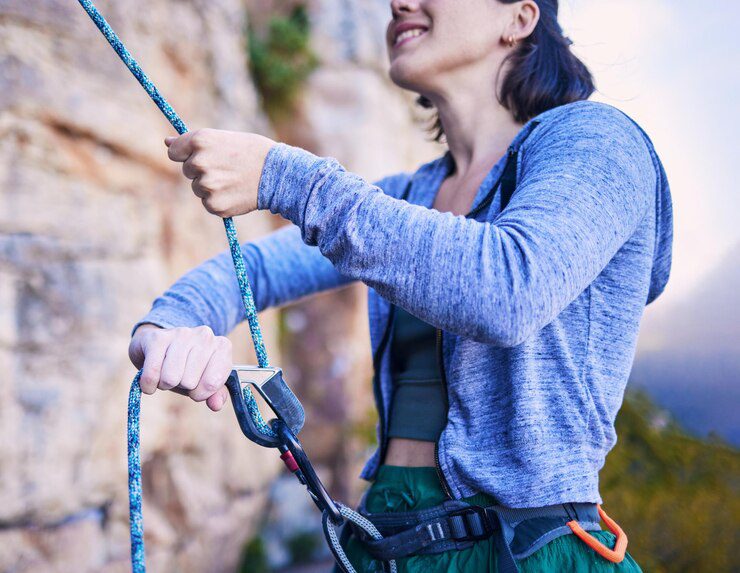
Imagine standing on the edge of a precipice, the wind tousling your hair as you gaze at the magnificent expanse below. This is the world of mountain climbing, where enthusiasts push their physical and mental limits to reach summits that touch the sky. The sheer exhilaration of overcoming obstacles and the satisfaction of achieving new heights are the rewards that beckon climbers to embark on their journeys.
Exploring the World of Climbing Gear
While the climber takes center stage, the unsung heroes of climbing gear form the backbone of every ascent. From sturdy harnesses to state-of-the-art carabiners, these tools are the lifeline that keeps climbers safe in the face of adversity. And among these tools, none is as essential and versatile as the mountain climbing rope.
The Vital Role of Climbing Ropes
A climbing rope isn’t just a piece of equipment; it’s a lifeline. It’s the unbreakable connection between the climber and their aspirations. Every step, every hold, and every reach is supported by the strength and resilience of this rope. It’s not merely a means of ascent; it’s a guardian that ensures safety and security.
How do Mountain Climbers Use Rope?
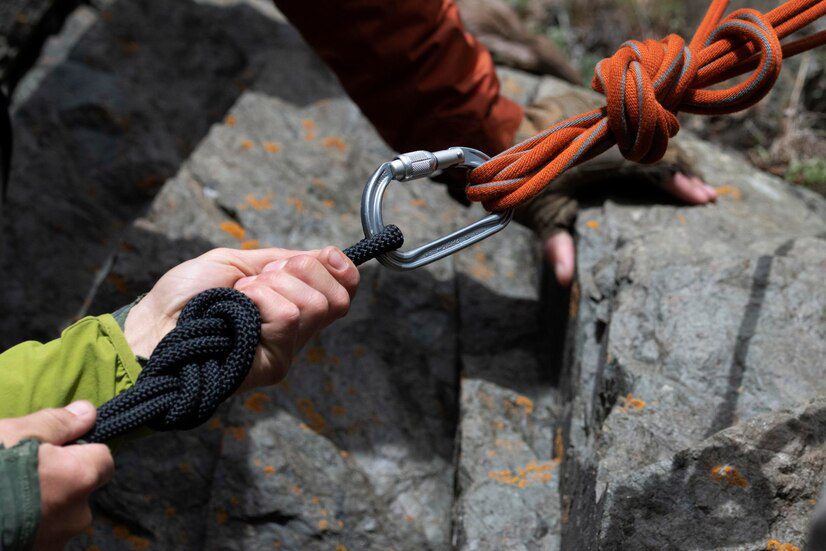
Follow the steps on how mountain climbers use rope:
- Choose the right rope. The type of rope you need will depend on the type of climbing you are doing. For example, if you are climbing a technical route, you will need a dynamic rope that can stretch to absorb shock. If you are climbing a less technical route, you can use a static rope that is less stretchy.
- Secure the rope. The rope should be anchored to something solid, such as a tree or a rock. You can use a variety of knots to secure the rope, such as the clove hitch or the figure-eight knot.
- Tie in to the rope. There are many different ways to tie in to a rope. The most common way is to use a figure-eight knot.
- Climb with the rope. As you climb, you should keep the rope close to your body. This will help to prevent you from falling.
- Belay your partner. If you are climbing with a partner, you will need to belay them. This means that you will use the rope to catch them if they fall.
- Descend with the rope. When you are finished climbing, you can descend using the rope. You can do this by rappelling or by using a climbing harness.
Components of a Climbing Rope System
Understanding a climbing rope involves delving into its intricate components. Beyond the visible exterior, a core carries the load, providing the tensile strength needed to support the climber’s weight. The protective sheath, often made of advanced materials, shields the rope from abrasions and enhances its durability, ensuring it stands up to the harshest conditions.
Strength and Flexibility
Climbing ropes are a marvel of engineering, a delicate balance between strength and flexibility. The dynamic rope, designed to stretch under impact, absorbs the shock of falls, reducing the force exerted on the climber. On the other hand, static ropes remain rigid, ideal for scenarios where stability and minimal stretch are paramount.
Decoding Climbing Rope Jargon
Entering the world of climbing ropes, you’ll encounter a lexicon that may initially seem foreign. Terms like “knots,” “belay,” and “lead climbing” become part of your vocabulary. Understanding these terms isn’t just about fitting in; it’s about ensuring your safety and effectively communicating with fellow climbers.
Ropes vs. Cords: The Differences
Amid the jargon, a critical distinction lies between ropes and cords. While both are integral to climbing, they serve different purposes. Ropes bear the climber’s weight and provide essential protection in case of falls. Conversely, cords are thinner and primarily used for specialized tasks like setting up anchors.
The differences between ropes and cords at a glance:
| Feature | Rope | Cord |
|---|---|---|
| Definition | A long, strong, flexible material made by twisting or braiding together several strands of fibers. | A length of fibers twisted together to create its shape. |
| Diameter | Usually thicker than cord. | Usually thinner than rope. |
| Strength | Stronger than cord. | Less strong than rope. |
| Flexibility | Less flexible than cord. | More flexible than rope. |
| Uses | Climbing, hoisting, anchoring, and other heavy-duty applications. | Sewing, jewelry making, camping, and other light-duty applications. |
Here are some additional points to consider:
- Ropes are typically made of natural fibers such as hemp, sisal, or cotton, or synthetic fibers such as nylon or polyester. Cords can be made of the same materials, but they can also be made of metal or plastic.
- Ropes are often braided, which makes them stronger and more flexible than cords. Cords are typically twisted, which makes them less strong but more durable.
- Ropes are typically used for more heavy-duty applications, such as climbing, hoisting, and anchoring. Cords are typically used for more light-duty applications, such as sewing, jewelry making, and camping.
Flexibility Meets Safety
Dynamic ropes, often hailed as the workhorses of climbing, possess a unique quality: elasticity. This property allows them to stretch, absorbing the force of a fall and reducing the impact on the climber. This added safety factor is a crucial reason dynamic ropes are the go-to choice for leading and sports climbing scenarios.
When Stability Takes the Lead
In scenarios where minimal stretch is required, static ropes shine. These ropes maintain their rigidity even under load, making them suitable for scenarios like rappelling, where stability is paramount. While they lack the shock-absorbing qualities of dynamic ropes, their strength and reliability make them indispensable in specific situations.
Single Ropes
Single ropes are the go-to choice for climbers seeking simplicity and ease of use. These ropes, designed to be used individually, perfectly balance weight and performance. Whether you’re tackling a straightforward route or a complex multi-pitch climb, a single rope is a reliable partner.
Twin Ropes
Twin ropes are an exciting option for those who crave versatility and added safety. Climbing with two ropes offers redundancy: if one rope gets damaged, the other remains intact. This additional layer of protection is particularly valuable in challenging alpine terrain and scenarios with high rockfall potential.
Half Ropes
Half or double ropes introduce a unique concept: using two ropes as a pair. Climbers alternate clipping each rope to different pieces of protection, reducing rope drag and allowing for creative route-finding. This approach enhances safety, particularly in traverses and wandering routes.
The Heart of Climbing Ropes
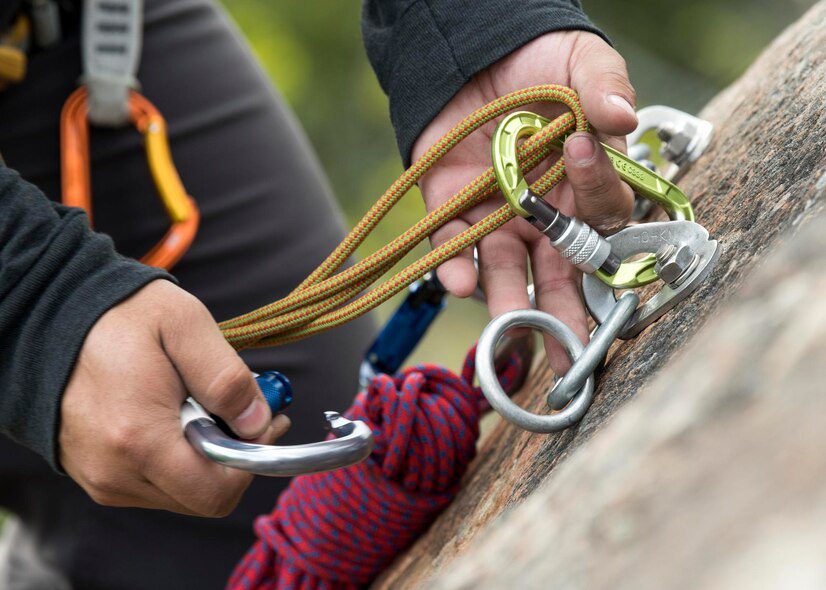
Within the intricate layers of a climbing rope lies its core, the unsung hero responsible for its strength and integrity. The core is typically constructed from multiple strands of tightly woven fibers, creating a robust central structure that bears the load. This core’s construction directly impacts the rope’s strength and flexibility.
The Protective Outer Layer
The outer sheath of a climbing rope is akin to armor, shielding the core from abrasions, sharp edges, and harsh weather. It’s the first line of defense against wear and tear. Modern climbing ropes often feature durable and advanced materials in their sheaths, striking a delicate balance between protection and flexibility.
From Nylon to Specialty Fibers
Climbing rope technology has evolved, giving rise to various materials that cater to specific needs. Nylon ropes are time-tested and versatile, offering a blend of strength and elasticity. Specialty fibers like Dyneema® bring incredible strength-to-weight ratios, making them ideal for lightweight pursuits like alpine climbing.
The Goldilocks Principle
Choosing the right rope diameter is a balancing act. Too thin, and the rope might not provide enough friction for effective belaying. Too thick, and it could become heavy. It’s about finding the “just right” diameter that suits your climbing style and preferences.
Thin Ropes
Thin ropes are the darlings of advanced climbers seeking the lightest possible equipment. Their slender profiles reduce weight and friction, allowing smoother movement and more precise placements. However, these ropes require experienced belaying techniques due to their reduced diameter.
Thick Ropes
For those new to climbing or seeking extra durability, thick ropes provide a reassuring choice. With a greater diameter, they offer enhanced resistance to abrasion and wear, making them suitable for beginners who might be rougher on their gear.
Understanding Rope Elasticity
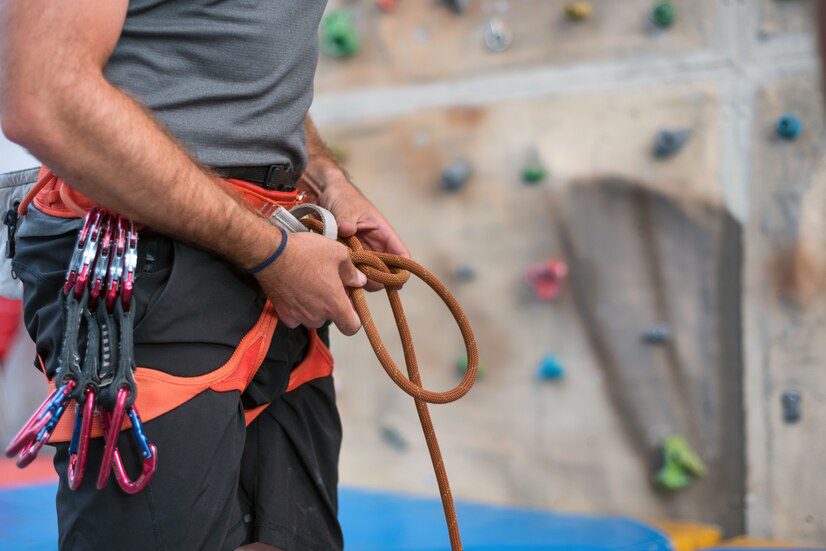
Elasticity, a fundamental property of climbing ropes, is pivotal in safety. When a climber falls, the rope stretches, absorbing the impact and reducing the force exerted on the climber and the anchors. This elasticity is a critical factor in preventing injuries and gear damage.
Understanding impact force is crucial to comprehending rope behavior during falls. Impact force measures the shock load a climber experiences when arrested by the rope. Lower impact force values are generally desirable, as they reduce the strain on the climber’s body and the anchors.
Safety First
The UIAA (International Climbing and Mountaineering Federation) sets safety standards for climbing equipment, including ropes. A UIAA-certified rope undergoes rigorous testing to ensure it meets stringent safety criteria. When choosing a climbing rope, looking for the UIAA certification provides more confidence.
Fall Ratings
Fall ratings indicate a rope’s ability to withstand falls under different conditions. Single, half, and twin ropes have specific fall ratings that help climbers understand the rope’s durability and the scenarios for which it’s suitable. Higher fall ratings denote greater durability and the ability to withstand multiple falls.
Rope Longevity
Caring for your climbing rope is essential to extend its lifespan. Avoiding direct sunlight, dirt, and moisture helps maintain its integrity. Regularly inspecting your rope for signs of wear and following proper storage techniques ensures it remains a reliable companion on climbing adventures.
Washing and Drying
Over time, climbing ropes can accumulate dirt, grime, and sweat. Properly cleaning your rope is a straightforward yet crucial task. Use mild detergent and warm water to clean the rope’s sheath gently. Ensuring your rope is thoroughly dry before storage prevents mold and mildew growth.
Best Practices for Preservation
Storing your climbing rope properly contributes to its longevity. Coiling the rope in a clean, dry, and cool environment prevents kinks and deformities. A rope bag or tarp shields it from dirt and moisture, ensuring it’s ready for action when you embark on your next adventure.
Skill Level and Intent
Selecting the right climbing rope isn’t a one-size-fits-all endeavor. Your skill level, climbing style, and intended use all play a role in determining the ideal rope for you. Novice climbers might prefer a thicker, more durable rope, while experienced climbers might opt for a thinner, more lightweight option.
Terrain and Style
Consider the type of terrain you’ll be tackling when choosing a climbing rope. Long alpine routes, sport climbing, or technical ice climbing each have unique demands. Additionally, your climbing style should influence your rope selection, whether you’re a cautious planner or an impulsive risk-taker.
Beyond the Summit
Climbing ropes extend their reach beyond mountaineering pursuits. In rescue operations, these ropes become lifelines for rescuers and those in distress. Whether evacuating injured climbers from remote locations or performing daring high-angle rescues, climbing ropes are pivotal in saving lives.
Creative Applications
The versatility of climbing ropes transcends traditional mountain climbing. Ropes find their way into various adventure sports, from canyoneering to caving, providing safety and support in unexpected environments. These ropes become the threads that weave together daring escapades and unforgettable experiences.
Honoring the Climbing Rope’s Role
As we conclude our journey through climbing ropes, we must pay homage to these unsung heroes. They’re not merely tools but lifelines that enable climbers to chase their dreams, conquer challenges, and touch the sky. Their significance goes far beyond their physical form; they embody safety, trust, and the spirit of adventure.
Armed with our uncovered knowledge, you’re now equipped to make informed decisions about climbing ropes. The complexities, terminologies, and nuances that once seemed daunting have been unveiled. As you embark on your next climbing adventure, may your climbing rope be a steadfast companion, a guardian of safety, and a symbol of the thrill of the ascent.
FAQs
- What is a mountain climbing rope called?
A mountain climbing rope is called a climbing rope. It is a strong, flexible rope used to secure climbers to the rock or ice while they are climbing. Climbing ropes are made of synthetic materials, such as nylon or polyester, and are designed to stretch when a climber falls, which helps to absorb the force of the fall and prevent serious injury.
- What are the different types of climbing ropes?
There are two main types of climbing ropes: dynamic ropes and static ropes. Dynamic ropes are designed to stretch when a climber falls, while static ropes are designed to be less stretchy. Dynamic ropes are the most common type of climbing rope for sport climbing and traditional climbing, while static ropes are more commonly used for rappelling, rescue, and ice climbing.
- What are the factors to consider when choosing a climbing rope?
There are several factors to consider when choosing a climbing rope, including the type of climbing you will be doing, the length of the rope, the diameter of the rope, and the weight of the rope. You should also consider the rope’s color and durability.
- How do I care for a climbing rope?
Climbing ropes should be cared for properly to ensure their longevity. Here are some tips for caring for your climbing rope:
* Clean the rope regularly with a mild soap and water solution.
* Avoid storing the rope in direct sunlight or heat.
* Do not overload the rope.
* Inspect the rope regularly for signs of wear and tear.
- Where can I buy a climbing rope?
Climbing ropes can be purchased from most outdoor retailers. When buying a climbing rope, it is important to purchase a rope from a reputable manufacturer.
Conclusion
Amidst the towering peaks and the whispering winds, where adventure meets challenge, a silent hero binds the world of mountaineers – the mountain climbing rope. But have you ever wondered what lies beyond the simple phrase, What is a mountain climbing rope called? Prepare to enter the realm of the unexpected as we unveil the intriguing tale behind the nomenclature.
From the raw thrill of mountain exploration to the art of scaling summits, from the echoes of ancient climbers to the modern innovations that shape the rope’s destiny, we’re about to embark on a journey that will forever transform how you see those coils of woven resilience. So, let’s delve into the enigma, understand how it’s more than just a “mountain rope,” and grasp what propels mountain climbers forward.

